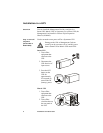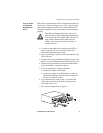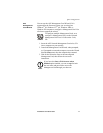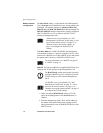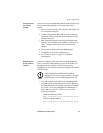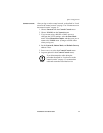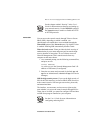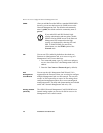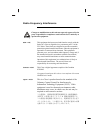
14 Installation and Quick Start
Quick Configuration
DHCP. You can use a RFC2131/RFC2132-compliant DHCP
server to configure the TCP/IP settings for the Management
Card.
1. A Management Card sends out a DHCP request that uses
the following to identify itself:
– A Vendor Class Identifier (APC by default)
– A Client Identifier (by default, the Management
Card’s MAC address value)
– A User Class Identifier (by default, the identification
of the Management Card’s application firmware)
2. A properly configured DHCP server responds with a
DHCP offer that includes all of the settings that the
Management Card needs for network communication.
The DHCP offer also includes the Vendor Specific
Information option (DHCP option 43). By default, the
Management Card will ignore DHCP offers that do not
encapsulate the APC cookie in the Vendor Specific
Information option using the following hexidecimal
format:
Option43=010431415043
where
– the first byte (01) is the code
– the second byte (04) is the length
– the remaining bytes (31 41 50 43) are the APC
cookie
See als
o
This section briefly summarizes the Management
Card communication with a DHCP server. For
more detail about how a DHCP server is used to
configure the network settings for a Management
Card, see “DHCP Configuration” in the Network
Management Card Users’ Guide.
See your DHCP server documentation to add
code to the Vendor Specific Information option.
To disable the APC cookie requirement, see
“Local access to the control console” on
page 15.
To change the control console’s DHCP Cookie
Is setting, use the Advanced option in the TCP/
IP menu. See “Remote access to the control
console” on page 15.



